-
India imports bulk drugs largely for economic reasons.
-
Chinese bulk drugs are cheaper by 25-30 per cent on average, compared to domestic products.
-
India to reduce over-dependence on Chinese pharmaceutical raw materials.
-
Indian Drug Companies’ Businesses gain profits and promote Make in India.
 Over 63 per cent of India’s pharmaceutical imports are Active Pharmaceutical Ingredients (API) and intermediates, and almost 70 per cent of it comes from China. Dependence on a single country for such crucial thing is not prudent in India’s national interest, hence there is a need to diversify its sourcing and develop domestic capacity.
Over 63 per cent of India’s pharmaceutical imports are Active Pharmaceutical Ingredients (API) and intermediates, and almost 70 per cent of it comes from China. Dependence on a single country for such crucial thing is not prudent in India’s national interest, hence there is a need to diversify its sourcing and develop domestic capacity.
The Government of India has set aside has allocated Rs. 10,000 crores for development of pharmaceutical companies in India to shift the reliance we have on foreign countries of especially China as they are leading producers of API- raw materials used in manufacturing medicines.
What Is an Active Pharmaceutical Ingredient (API)?
The Active Pharmaceutical Ingredient (API) is the part of any drug that produces the intended effects. Some drugs, such as combination therapies, have multiple active ingredients to treat different symptoms or act in different ways.
All drugs are made up of two core components: the API, which is the central ingredient, and the excipient, the 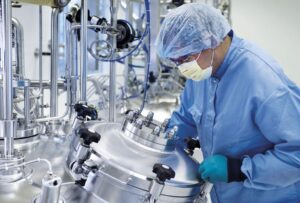 substances other than the drug that helps deliver the medication to your system. Excipients are chemically inactive substances, such as lactose or mineral oil in the pill.
substances other than the drug that helps deliver the medication to your system. Excipients are chemically inactive substances, such as lactose or mineral oil in the pill.
Production of APIs has traditionally been done by the pharmaceutical companies themselves in their home countries. But in recent years many corporations have opted to send manufacturing overseas to cut costs. This has caused significant changes to how these drugs are regulated, with more rigorous guidelines and inspections put into place.
Where Are APIs Made?
While many pharmaceutical companies are located in the United States and England, most API manufacturers are overseas. The largest are located in Asia, particularly in India and China.
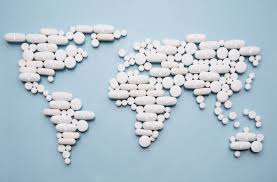 However, more and more Indian companies are outsourcing to cut costs on expensive equipment, employees, and infrastructure. While this has helped their bottom line, there is continued concern about the quality of these APIs produced overseas.
However, more and more Indian companies are outsourcing to cut costs on expensive equipment, employees, and infrastructure. While this has helped their bottom line, there is continued concern about the quality of these APIs produced overseas.
Notably, AstraZeneca Pharmaceuticals used to operate several manufacturing centres in the United States. Now, just 15% of their APIs are created in the U.S. and there are plans to end that small percentage and outsource all manufacturing overseas.
What are the real supply issues that led to impact on product pricing?
Historically China has been the source of manufacture for many basic chemicals, intermediates and APIs- they have over period of time gained high levels of market shares given cost competitiveness.
This resulted in manufacturing of categories of intermediates, APIs moving away from EU and other parts of the
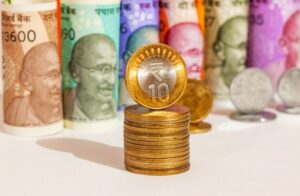
world largely to Asia dominated by China. As a result, these companies in other parts of the world started moving to other products areas or possibly curtailed operations—leading to a further concentration in global offtake from China and in some case India of the intermediates/APIs.
Now, when China started to take measures to curb pollution and this began to impact certain zones/manufacturers—this had a domino effect given that probably these manufacturers were the ones with max volume supplying to market and their loss of production impacted price and supply across the value chain of pharma and chemical industry.
What are the main reasons for dependence on China for critical raw materials in commonly used drugs?
We have been buying nearly 60% of our key starting materials (KSM)- APIs from China. Given the challenges emerging from China we have increasingly begun to build alternative sources in India and/or make the intermediate captive wherever the economics works out.
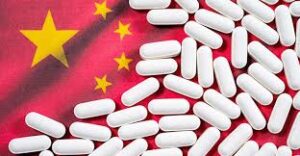 Qualifying new sources takes time (regulatory, quality requirements) especially since 100% of our business is focused on the regulated pharma markets, however we are committed to work closely with our supplier base (existing and new) to ensure timely delivery of our product to our customer base and eventually the patient population.
Qualifying new sources takes time (regulatory, quality requirements) especially since 100% of our business is focused on the regulated pharma markets, however we are committed to work closely with our supplier base (existing and new) to ensure timely delivery of our product to our customer base and eventually the patient population.
However, China has certain inherent strengths in chemistry technologies and infrastructure capabilities which they really leveraged to gain higher market shares, which made the customer base dependent on these sources of supply.
Why Indian pharma companies should reduce dependency on import of APIs from China?
Raw materials for Indian drug makers worth $3.5 billion are being sourced from China.
Sudarshan Jain, Senior Advisor, Former MD, Abbott Healthcare & Krishna Prasad Chigurupati, CMD, Granules spoke in interviews and both believe that recent policy push for investments in API has been an encouraging step for the sector, but policy push can only act as a catalyst for investment. Scale and size of API & intermediates will need to be achieved to be competitive.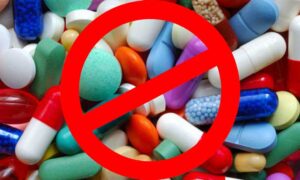
According to Granules, this API manufacturing is a huge opportunity for Indian pharma companies to reduce the dependence on China for the import dependence of API.
Dependency on China as well as other countries should be reduced not only for our economy but also for quality control and indigenous market growth in our domestic land.
Why China has an edge over India in API manufacturing?
Currently, China is the global leader in the production and export of APIs, which is around 20 percent of the world’s API production. This, due to the low cost of utilities and greater government support. In fact, some of the most important APIs such as paracetamol are imported from China in India.
Let’s take a look at the comparative analysis of India and China’s API industry:
A KPMG report suggests that the API market in China is expected to grow to Rs 1,234 billion in 2024 vs Rs 982 billion in 2020, up 25 percent and the Indian API market is expected to grow to Rs 1,109 billion in 2024 vs Rs 798 billion in 2020, up 39 percent.
According to KPMG, the Chinese API market has now diversified to over 2,000 API molecules and more than 7,000 API manufacturers (the number of manufacturers has increased by five times in the last five years) with an annual production capacity exceeding 2 million tonnes while the Indian industry has around 1,500 plants that manufacture APIs.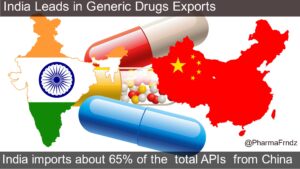
The cost of production in China is 20-30 percent lower than in India. This is what the breakup looks like:
- Raw material cost in India is 25-30 percent higher than in China.
- Electricity is 20 percent more expensive in India than in China.
- Labour costs in India are 1.8X lower than in China, but China’s labour productivity is 1.5X higher than India’s.
- Other costs which include financing, logistics, production and set-up costs are 30 percent higher in India than in China.
- This is a result of China’s cost efficiency, large scale manufacturing capacities, technical capabilities and supportive government policies.
For instance, paracetamol, a pain killer, is priced around $4/kg in India whereas it is priced at $3.3-3.5/kg in China. Efavirenz, used to treat HIV, is priced at $95-99/kg in China whereas in India, it is priced at $115/kg. Tenovifir, also used to treat HIV, is also priced higher in India than in China.
The cost of APIs being manufactured in India is higher due to various reasons including the low availability of key starting material (KSM). In the case of Tenofovir, the KSM (Adenine) required is not produced in India due to the high cost of technology/infrastructure needed to manufacture it.
Are there Regulatory measures for the production of API?
The quality of APIs has a significant effect on the efficacy (producing the result desired) and the safety of medications. Poorly manufactured or compromised APIs have been connected to serious issues, such as illnesses or death.
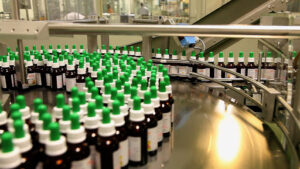 Even in the case of outsourcing, APIs are subject to stringent regulations and oversight from the country they are shipped to. For example, API manufacturing plants overseas still go through an inspection by the U.S. Food & Drug Administration.
Even in the case of outsourcing, APIs are subject to stringent regulations and oversight from the country they are shipped to. For example, API manufacturing plants overseas still go through an inspection by the U.S. Food & Drug Administration.
As evidenced by the creation of APIs, the pharmaceutical industry is rapidly changing. Companies no longer handle every step of the drug-making process. One company used to create the API, build the capsule, and package the medicine—but no longer.
In response, governing bodies responsible for patient and public safety have instituted intense screenings to ensure medication quality and prevent defects. Violating any of these established standards can result in fines or very expensive recall for the pharmaceutical companies behind these manufacturers.
India to reduce over-dependence on Chinese pharmaceutical raw materials
India’s pharmaceutical imports in 2018-19 was Rs 76,303.53 crore and exports were at Rs 1,40,961.31 crore, the official statistics point out.
The government has decided to set up three bulk drug parks for Rs 3,000 crore and approved a Rs 6,940 crore production-linked incentive (PLI) package for promotion of domestic manufacturing of critical intermediates and APIs, one of the officials said.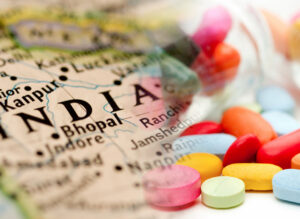
“However, the schemes would take five to eight years to show the results. Meanwhile, we must take some contingency measures. Sourcing of raw materials for key medicines was one of our key concerns when Covid-19 pandemic gripped China that led to complete halt of imports from that country,” the official said.
A second official said deteriorating relations with China is another reason to find alternatives quickly as availability of medicines is a matter of national interest.
India can reduce API imports from China considerably within short span of time by strengthening existing domestic units that are facing unequal competition from China.
Government considering hike in API import duties.
With the government pushing for India’s self-reliance in several industries, the Department of Pharmaceuticals is mulling the option of hiking import duties on active pharmaceutical ingredients (APIs). While still in early stage discussions, the move aims to give a boost to the country’s bulk drug manufacturing industry, which has been claiming difficulties in competing with cheaper imports, said persons close to the development.
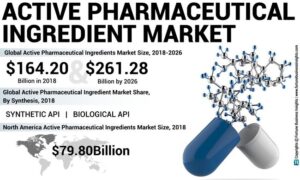
This is one of the ideas under Atma-Nirbhar Bharat. We can make many APIs, but there is a cost disadvantage. The manufacturing capacity here is smaller right now compared to some other countries where the industry is manufacturing at a larger scale, making it difficult for our manufacturers to compete as it is cheaper to import.
India currently imposes a basic customs duty of around 10 percent on APIs. The proportion of the hike has not been decided yet, as the discussions are still in the early stages. The move is being considered in order to ensure a “level playing field” for domestic manufacturers, so that they can compete with foreign manufacturers while trying to scale up capacity.
Indian Government notifies incentive scheme for local API manufacturing to cut imports.
On 21 July 2020, the central government had notified a Rs 6,940-crore production linked incentive scheme to boost local bulk drug manufacturing and further reduce dependence on imports. Around 53 active pharmaceutical ingredients (APIs) — covering 41 products — have been identified by the government, for which companies will be eligible for financial incentives, provided they set up indigenous greenfield manufacturing.
According to a government notification, bulk drugs accounted for 63 per cent of total pharmaceutical imports in the country in 2018-19. “The Indian pharmaceutical industry is the third largest in the world by volume and 14th largest in terms of value. India contributes 3.5 per cent of total drugs and medicines exported globally. Despite these achievements, India is significantly dependent on import of some basic raw materials, viz., bulk drugs used to produce finished dosage formulations,” it read.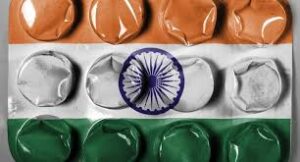
The government also notified a scheme to promote bulk drug parks. For selected parks, financial assistance to the tune of 70 per cent of the project cost of common infrastructure facilities will be provided. In the case of Northeast states and hilly states (Himachal Pradesh, Uttarakhand, Union Territory of Jammu & Kashmir, and Union Territory of Ladakh), financial assistance will be 90 per cent of the project cost. The maximum assistance under the scheme for one bulk drug park will be limited to Rs 1,000 crore. The total financial outlay of the scheme is Rs 3,000 crore.
Indian Drug Companies’ Businesses gain profits contributing to – ‘LOCAL se Vocal’ campaign.
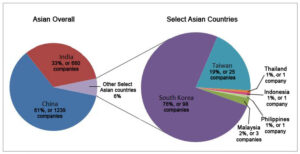 Sanofi India: Drug firm Sanofi India on Tuesday reported a net profit of Rs 136.3 crore for the second quarter ended June 30, 2020. The company had posted a net profit of Rs 97.4 crore for the corresponding period of the previous fiscal.
Sanofi India: Drug firm Sanofi India on Tuesday reported a net profit of Rs 136.3 crore for the second quarter ended June 30, 2020. The company had posted a net profit of Rs 97.4 crore for the corresponding period of the previous fiscal.
Dr Reddy’s Laboratories: Shares of Dr Reddy’s Laboratories advanced over 2 per cent in Wednesday’s morning trade ahead of its financial results for the quarter ended June 30.
The scrip traded 2.09 per cent higher at Rs 4,135 at around 11.30 am (IST), while the benchmark BSE Sensex was down 0.26 per cent at 38,391.
The revenue beat primarily came on the back of very strong performance in API business which was impacted in Q1 of FY20. But in last four quarters, it had been hovering around $100 million and this time around, it came in at $140 million. So, that is the major driver of the revenue beat in a financial view.
Aarti Drugs’ API business: Aarti Drugs, which is primarily engaged in the manufacture of Active Pharmaceutical Ingredients (APIs), the key ingredient in medicines, has seen its overall sales jump to Rs 544.67 crore i.e. a year-on-year (Y-o-Y) increase of 34.34 percent — for the quarter ended June 2020.Overall sales account for both domestic sales as well as exports.Profit after tax rose 280.63 percent to Rs 85.45 crore, on a Y-o-Y basis, during the same period. Earnings Before Interest, Tax, Depreciation and Amortization (EBITDA) margin stood at Rs 135.23 crore, up by 146.89 percent Y-o-Y.
The API segment, which contributes approximately 85 percent to the total revenues, grew 28 percent Y-o-Y to Rs 460 crore for the quarter ended June 2020.
For the India business, the secondary sales data suggested approximately mid-single digit to high single digit decline i.e. a year-on-year decline of around 10% in the Indian business. But all these factors are unlikely to have any structural impact on the India branded generic market growth story and growth is expected to recover in the following quarters.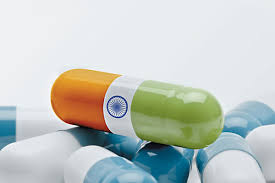
The cabinet has approved the production-linked incentive (PLI) scheme for the promotion of domestic manufacturing of 53 critical bulk drugs and intermediates in the country with a budget of Rs 6,940 crore for the next eight years.
In terms of APIs, India has a definite advantage. India has a high share of drug master files (DMFs) filed in the US, about 15 percent, and it has the highest number of USFDA-approved API facilities.
Chinese API and intermediate suppliers are well aware that their industry will suffer if India doesn’t buy raw materials from them. However, a fast and effective implementation of the government scheme will be crucial along with the focus on addressing the challenges timely.

